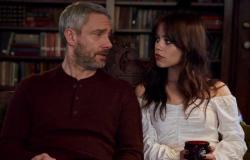
Eight years ago i Marvel Studios adapt one of the most famous and loved comic stories of all time for the big screen, Civil War. The film turns out to be a great success with audiences, an entertaining blockbuster but a mediocre adaptation of the original story. Some time later Alex Garland hypothesizes a new civil war, this time in the dystonia of a plausible world, in which the United States of America is at war with itself, and there is no superhero willing to take one side or the otherrather unlikely but real heroes, like photographers and journalists, who rather than taking sides, want to talk about the conflict, showing its fundamental stupidity.
Civil War, the plot
For the foreseeable future, the United States has turned its anger and aggression against itself. In the Land of Freedom the Civil War rages. As the suburbs burn and bullets of fire cross the sky, a breakaway rebel faction known as the Western Front moves ever closer to Washington DC with the aim of killing the president, who, in his latest attempt to dupe his followers and taunt his adversaries, he delivers an emphatic speech to the nation, his last, with a formula that is very reminiscent of Trumpian emphasis. A direct reference to the real world, of course, but perhaps also the only one present in Civil Warwritten and directed by English Alex Garlandwhich more than an explicit comment on the United States today is a reflection on the conflict itself and its lack of meaning.


In particular, Garland takes the perspective of war reporters, those who “have seen enough of it around the world” to have learned that the battlefield is common ground; who neither crowns victors nor overthrows the vanquished; that the same atrocities occur wherever there are weapons and people ready to point them at each other. Lee Smith (Kirsten Dunst), a front-line photographer, has learned this very well in her work on the front lines, so much so that the last thing she sees when she closes her eyes to sleep are the horrors her lens has witnessed over the years. She knows the lesson so well that her soul is now atrophied in the face of death, an indispensable condition, however, to be able to do that job, living in a gray area of morality in which ethical questions cannot be supported, as she herself will explain to the beginner Jessie (Cailee Spaeny), who with her embarks on a very dangerous journey behind enemy lines to Washington to photograph and interview the president.
Four faces of the same profession
The strength of Civil Wars, first of all, is that of building a picture of war correspondents that offers as many aspects and characteristics as the protagonists of the story. We have said of Lee, an insensitive and cold professional, all softness in her personality has long been abandoned to make room for an indifference that guarantees her endurance of the horrors she witnesses; Joel (Wagner Moura) instead represents thrill-seeking, its approach is more enthusiastic; Sammy (Stephen McKinley Henderson) although old and out of shape, he cannot tolerate the idea of retiring, he is still hungry for action and news, the insatiable reporter who will do anything for a scoop; finally Jessie, beginners but passionate, horrified and terrified but absolutely aware of where she wants to be and what she wants to do. Through this four-sided portrait, Alex Garland talks about the figure of the reporter as a person deformed by the front line, who, however atrocious, finds it difficult to feel comfortable anywhere else. More than other films and documentaries by war reporters, the film more closely evokes the atmospheres and psychologies of The Hurt Locker Of Kathryn Bigelow.

 And this psychological portrait is outlined with awareness by Garland which confirms itself as one of the filmmaker most interesting and capable of these years. His style is ferocious and he uses skillful editing, he narrates the excited fight scenes almost with fun, succeeding, thanks to a cast in a state of grace, to capture the sad satisfaction you feel in immortalizing a shot that restores the truth of the moment in the midst of carnage. He uses dense silences and suspended expectations with great elegance, managing to build great tension in just a few moments using his natural features, such as the chirping of birds, immediately before the outbreak of blind violence. An example of this ability is the short sequence featuring a superlative Jesse Plemons.
And this psychological portrait is outlined with awareness by Garland which confirms itself as one of the filmmaker most interesting and capable of these years. His style is ferocious and he uses skillful editing, he narrates the excited fight scenes almost with fun, succeeding, thanks to a cast in a state of grace, to capture the sad satisfaction you feel in immortalizing a shot that restores the truth of the moment in the midst of carnage. He uses dense silences and suspended expectations with great elegance, managing to build great tension in just a few moments using his natural features, such as the chirping of birds, immediately before the outbreak of blind violence. An example of this ability is the short sequence featuring a superlative Jesse Plemons.
We are not from the area of The Children of Men Of Alfonso Cuaronwhere the political context is decidedly more solid, but Civil War replicates its visual appeal, offering, paradoxically, powerful cinematography in the service of a horror story, and chillingly captures the terrible power of war that feeds itself, almost always depriving itself of its initial motivation and emptying itself of any ideology and meaning .
Tags: Civil War Film Review Alex Garland



